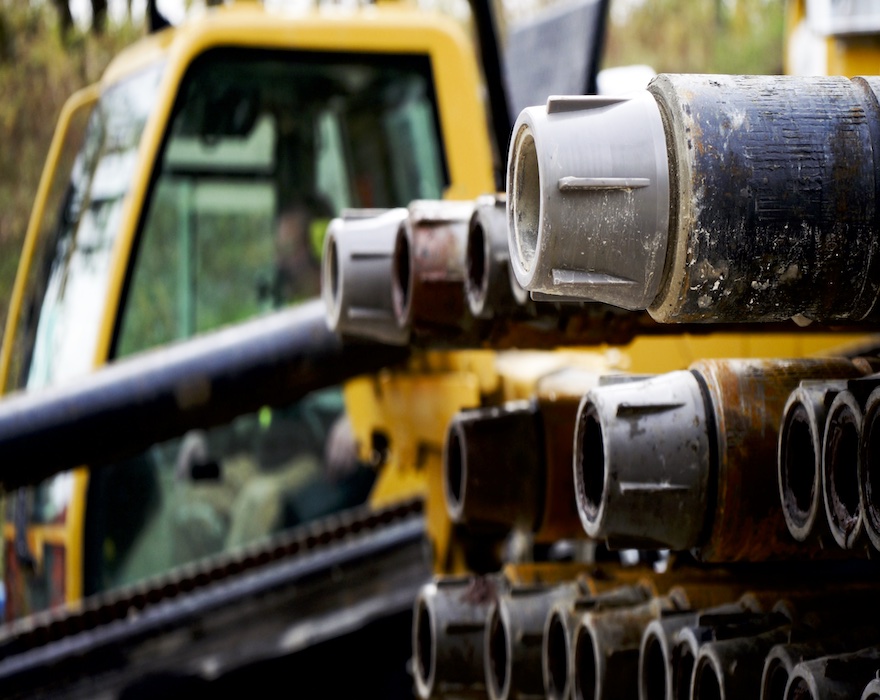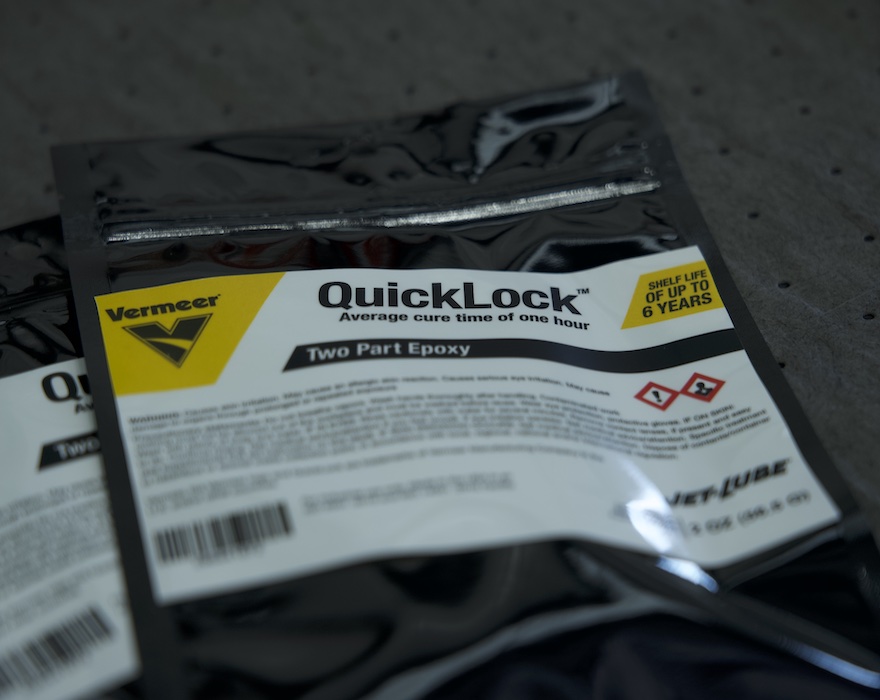Horizontal directional drilling (HDD) tooling is where the real magic happens. The tooling cuts the bore path, widens the hole and pulls the product back through it. Choosing the right HDD tooling based on ground conditions and paying close attention to the condition of consumable wear parts helps maximize productivity.
The following tips will help you get more from your HDD tooling.

Monitor the drill rod and sub saver
“The basket of drill rods represents the most expensive consumable that most HDD crews bring to the job. The condition of each drill rod’s threads is critical to getting the longest life out of those rods and completing successful bores,” said Vermeer Cutting Edge Product Manager Cody Mecham.
Protect the basket of drill rods by monitoring the thread condition on individual rods and the sub saver. Inspect the HDD tooling threads after every job and replace the sub saver when signs of wear appear. Timely replacement can help maximize drill rod life since the sub saver leaves its imprint on every drill rod in the basket.
Damage or wear to sub saver and drill rod threads may be difficult to detect visually. Profile gauges provide a more accurate method for assessing thread conditions. In addition to keeping a profile gauge handy, crews should have an extra sub saver on the job so that it’s available when needed.
“To determine if a sub saver or drill rod needs replacement, align the profile gauge with its threads. If there is a space between the gauge and the threads, it’s time to replace the sub saver or retire the drill rod,” said Mecham.
Traditionally, timely replacement of the sub saver was challenging because of the standard 24-hour cure time for thread-lock compounds.
“HDD crews often choose to wait until the end of the shift to replace a worn-out drill sub saver because of the time it takes traditional thread-locking compounds to cure,” said Mecham.
Vermeer identified a solution to address these long cure times that were affecting HDD tooling maintenance. Vermeer QuickLock™ two-part epoxy thread-locking compound cures in about an hour, giving crews more flexibility to perform timely sub saver changeouts.
“With Vermeer QuickLock epoxy, crews can replace the sub saver, go to lunch and get back to drilling. This not only helps crews work efficiently, but can help prevent thread damage to drill rods because worn sub savers are being replaced sooner,” said Mecham.

Select HDD tooling to do MORE
Unless you work in the same geographical area every day, it’s a good idea to carry a variety of drill bit options to jobsites. Understanding what type of bit works best in certain materials can be a game changer for crews.
- When drilling in sand and sandy loams, choose a bit with a broad front profile to enhance steering. If the sand is followed by more difficult material, such as coral, a semi-tapered bit may be preferred.
- In soft clay and loam, a bit with a broad profile is ideal for steerability. The addition of hardfacing and/or carbide buttons is handy in more dense material.
- Cobble, gravel, glacial till, chunk rock and any non-consistent type of rock require more of a scooping action to push material out of the way. Choose an aggressively tapered bit for these conditions to needle through the material.
- Consult with a Vermeer HDD tooling specialist when working in rocky ground.
Transmitter housing selection will also vary by ground conditions and application.
“A basic housing with universal threading and a single fluid nozzle works fine in ideal ground conditions, and a crew isn’t swapping out bits frequently. But for working in harsh ground conditions and performing quick tooling swaps, premium transmitter and tooling packages are a more productive solution,” said Mecham.
Talk to your Vermeer HDD tooling expert to find the best solution.
Organize maintenance tools
In addition to basic tools like grease guns, hammers and punches, HDD crews should have a set of breakout tongs for making and breaking torqued connections. The drill’s vices or breakout tongs are the preferred methods for adding or removing threaded tooling.
To quickly add and remove bits from non-torqued HDD tooling packages, crews should also carry a multi-tool with them. With features like a lid punch, retention pin punch, cap screw tool and cleaning device, the multi-tool can minimize the amount of equipment on-site.
Master the fundamentals
Selecting and caring for HDD tooling may seem intimidating, but it’s important to focus on the basics. Regularly checking threads and replacing sub savers, understanding basic drill types and their performance, and providing crews with the necessary tools for HDD tooling care are all essential for maximizing productivity. Your Vermeer dealer is there to help you at every step.
Vermeer Corporation and Whitmore Manufacturing LLC reserve the right to make changes in engineering, design and specifications; add improvements; or discontinue manufacturing at any time without notice or obligation. Equipment shown is for illustrative purposes only and may display optional accessories or components specific to their global region.
Please contact your local Vermeer dealer for more information on machine specifications. Vermeer, the Vermeer logo and QuickLock are trademarks of Vermeer Manufacturing Company in the U.S. and/or other countries. Jet-Lube is a trademark of Jet-Lube LLC. © 2023 Vermeer Corporation. All Rights Reserved.
